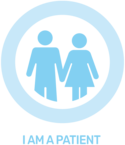I want to have a child with the help of a donor.
I'm single.

GENES4LIFE
Genes4Life is a genetic test used to investigate whether there is a risk of having a child with an inherited genetic disease. Hereditary diseases are inherited through genetic material, from one generation to the next. In some cases, conditions can “skip” one generation and be inherited in the next; this happens in disorders with recessive inheritance. Recessive inheritance means that a person can carry disease-related mutations without being aware of them. You already have the house of your dreams and the job you wanted, but you still don't have a child.GENES4LIFE
Provides knowledge about 430 genes related to rare diseases due to recessive inheritan.
We study more than 100 high-prevalence diseases and more than 400 low-prevalence diseases.
//Prevalence in medicine, a measure of the total number of people in a specific group who have
(or had) a certain disease, condition, or risk factor at a specific point in time or during a given period//
Reference: https://www.medicinenet.com/prevalence/definition.htm
93 genes Genes2Life
high prevalence
+
337 genes
low prevalence
=
GENES4LIFE
430 GENES
TYPES OF GENETIC DISEASES WE INVESTIGATE WITH GENES4LIFE
LOW PREVALENCE
Genetic diseases: Juvenile amyotrophic lateral sclerosis.Statistics: the prevalence and incidence of JALS are not known. A small number of cases have been reported to date. The disorder has been described in various ethnic groups.
Genetic diseases: Bloom syndrome.
Statistics: Bloom syndrome (BSYN) overall prevalence is unknown. Ashkenazi Jewish population is estimated at approximately 1/48000 births.
Genetic diseases: Triple-A syndrome.
Statistics: Prevalence is unknown but less than 100 cases have been published since the first description in 1978.
Reference: https://www.orpha.net/consor/cgi-bin/index.php?lng=EN
HIGH PREVALENCE
Genetic diseases: Spinal muscular atrophy.Statistics: 1 in 6000-10000 children are born with the disease.
In the United Kingdom, approx. 2000-2500 children and adults with SMA.
Genetic diseases: Cystic fibrosis
Statistics: Approx. 1 in 30 people is a healthy carrier of cystic fibrosis without knowing it. In Denmark, 1-2 children are born with cystic fibrosis every month. This represents approx.150000 people in Denmark.
Genetic diseases: Lysosomal diseases such as Tay-Sachs, Sandhoffs, Niemann, Gauchers, Mannosidose, Fukosidose, Sialidose, Hurlers, Hunter, Sanfilippos, Morquios, I-cell, Cystinose, Sallas, Wolmans.
Statistics: Approx. 70 different lysosomal diseases. Each of these is very rare, but as a group, they affect about 1 in 5000-8000 newborns. Every year, about 10 children are born with one of these diagnoses in Denmark.
Genetic testing plays an essential role in fertility treatments. One of the reasons why fertility treatments may fail is the presence of genetic mutations that can lead to repeat abortions and unsuccessful treatments.
GET TESTED BEFORE:
- Trying to get pregnant.
- Starting an assisted fertilization treatment.
- Starting treatment with donor eggs or sperm. Both patient and donor can be healthy carriers of diseases with a genetic mutation in the same gene.
HOW TO DO IT?






